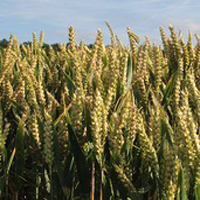Variation in micronutrient and macronutrient concentrations in grain of four wheat genotypes grown in Albaha region, Saudi Arabia

Accepted: 17 October 2020
All claims expressed in this article are solely those of the authors and do not necessarily represent those of their affiliated organizations, or those of the publisher, the editors and the reviewers. Any product that may be evaluated in this article or claim that may be made by its manufacturer is not guaranteed or endorsed by the publisher.
Major dependence on wheat-based foods with low bioavailability of nutrients led to high malnutrition rates, especially in developing counties. Four wheat genotypes (Albelad (BE), Aldwasair (AD), Australia (AU) and Najran (NJ)) grown in Albaha region were analyzed for the first time for the variation in micronutrient (Se, Mo, Cu, Zn, Mn, Fe, B and Na) and macronutrient concentrations (P, Ca, Mg and K) in the whole wheat grain using Inductively coupled plasma mass spectrometry (ICP-MS) in order to select genotype of high nutritional value of the wheat for human consumption for further breeding by farmers. Substantial micronutrient variation existed among the four genotypes according to their mean Se, Mo, Zn, and Na concentrations, while macronutrient variation existed in their P and Ca concentrations. The NJ genotype appeared to contain higher concentrations of Se, Na, and Ca than the other genotypes while AU contained higher concentrations of Zn and P than AD, BE, or NJ. The results of this study can provide information about micro- and macro-nutrient enriched wheat genotypes for agricultural strategies aimed at improving the nutritional value of wheat plants.
Supporting Agencies
This research was funded by the Deanship of Scientific Research, Albaha University, Saudi Arabia (Grant No. 12-1439).PAGEPress has chosen to apply the Creative Commons Attribution NonCommercial 4.0 International License (CC BY-NC 4.0) to all manuscripts to be published.


 https://doi.org/10.4081/pb.2021.8788
https://doi.org/10.4081/pb.2021.8788



